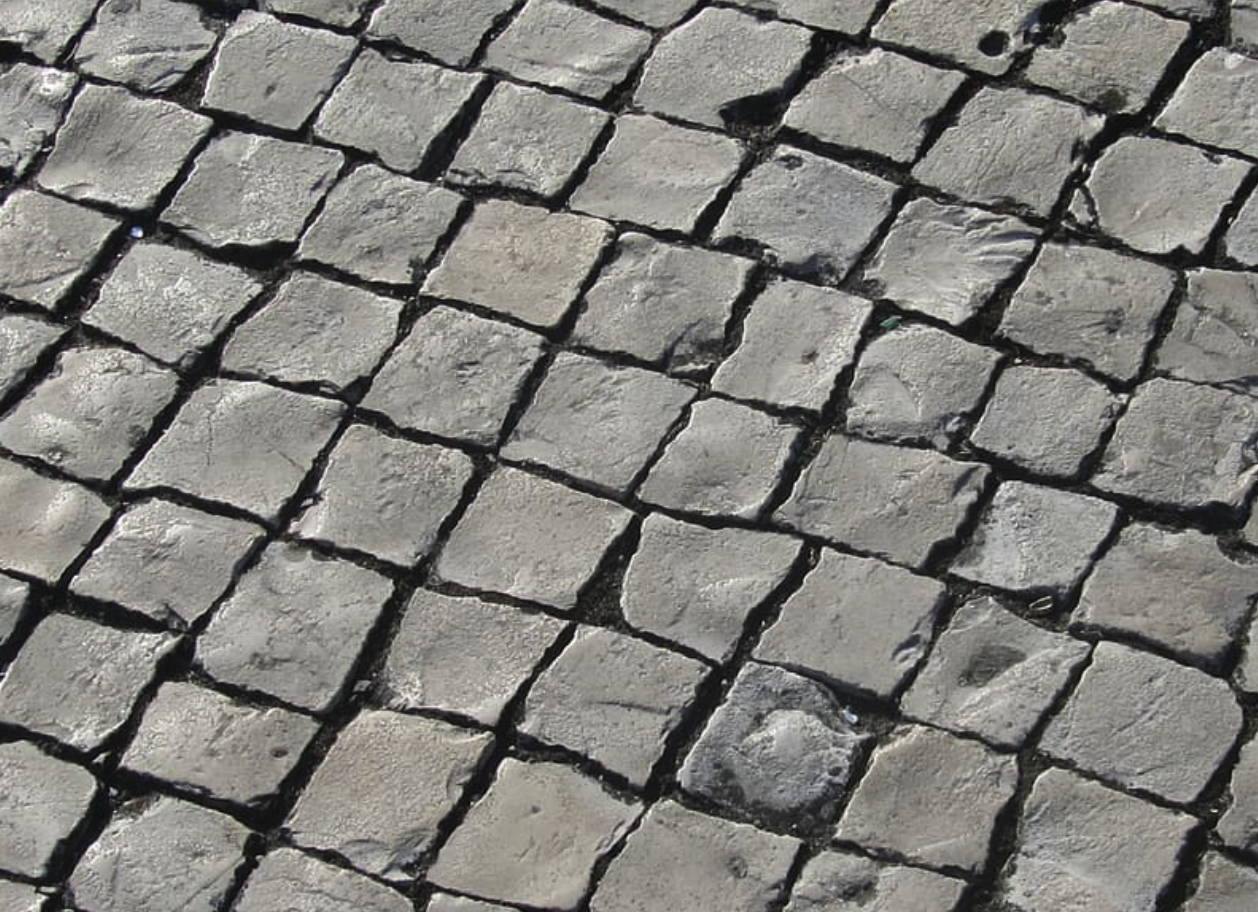2023 Portugal Daily Update

Introduction to Calçadas in Portugal
Calçadas, the charming cobblestone pavements found throughout Portugal, hold significant cultural value in the country. These unique walkways are not just functional but also an integral part of Portuguese heritage and identity.
The word "calçada" itself translates to "pavement" or "sidewalk," but it encompasses much more than that. Calçadas are a visual representation of Portugal's rich history and craftsmanship, reflecting the country's architectural traditions and cultural influences.
These meticulously laid cobblestones can be seen in cities, towns, and villages across Portugal, adding character and charm to the streets. Walking on calçadas is like stepping back in time, as they have been part of the Portuguese landscape for centuries.
In this blog post, we will delve into the fascinating world of calçadas. We will explore their history, patterns, and famous examples found throughout Portugal. Whether you're a travel enthusiast seeking new experiences, a history buff interested in architectural heritage, or a photography enthusiast looking for captivating subjects, this post will provide insights and inspiration for your journey through the enchanting calçadas of Portugal. So let's embark on this adventure together!
Famous Calçadas in Portugal
Portugal is home to numerous famous calçadas that showcase the country's artistic and architectural prowess. Two notable examples are Lisbon's Rossio Square and Porto's Ribeira District.
1. Lisbon's Rossio Square
Rossio Square, located in the heart of Lisbon, features a stunning wave-like calçada pattern that captivates visitors. This iconic square has been a popular meeting point for locals and tourists alike for centuries. The intricate design of the calçada creates an optical illusion, giving the impression of waves rippling across the pavement.
Walking through Rossio Square is like stepping onto a work of art. The black and white cobblestones form an exquisite mosaic that adds to the square's charm and allure. Whether you're enjoying a cup of coffee at one of the surrounding cafes or simply taking in the bustling atmosphere, Rossio Square offers a unique experience that embodies the spirit of Lisbon.
2. Porto's Ribeira District
In Porto, the Ribeira District stands out as a picturesque neighborhood with its narrow streets and colorful buildings along the Douro River. This historic district also boasts intricate calçada designs that add to its charm.
As you stroll along the riverfront promenade, you'll notice beautifully crafted patterns adorning the calçadas beneath your feet. These designs often feature geometric shapes and floral motifs, showcasing Portugal's artistic heritage. The vibrant colors used in some sections further enhance the visual appeal of Porto's Ribeira District.
Exploring this area allows you to immerse yourself in history while appreciating the beauty of Portuguese craftsmanship. Take your time to wander through its winding streets, soak up the ambiance, and admire the unique calçadas that contribute to Ribeira's enchanting atmosphere.
Both Rossio Square in Lisbon and Ribeira District in Porto exemplify how calçadas can transform public spaces into works of art. These famous calçadas are not only visually striking but also serve as reminders of Portugal's cultural heritage and architectural excellence.
Experiencing Calçadas in Portugal
To truly immerse yourself in the charm of calçadas, there are two fantastic ways to experience them: through walking tours and photography.
1. Walking Tours
Joining guided walking tours is an excellent way to learn about the history, significance, and cultural value of calçadas in Portugal. Knowledgeable guides will take you on a journey through different regions, allowing you to explore their unique calçada patterns.
These tours provide fascinating insights into the craftsmanship behind these cobblestone pavements. You'll discover how calçadas have evolved over time and gain a deeper appreciation for their role in Portuguese culture. From the simple designs of early calçadas to the intricate patterns influenced by Arab and Moorish cultures, each region has its own story to tell.
As you walk along these historic streets, you'll also have the opportunity to witness firsthand how calçadas enhance the beauty of Portugal's towns and cities. The combination of architectural wonders, vibrant street life, and stunning calçada patterns creates an unforgettable experience.
2. Photography Tips
For photography enthusiasts, capturing the beauty of calçadas can be a rewarding endeavor. Here are some tips to help you capture captivating shots:
Focus on patterns and textures: Calçadas offer a plethora of intricate patterns and textures that make for visually striking photographs. Get up close to highlight the details or step back to capture larger sections with repeating motifs.
Experiment with angles: Change your perspective by shooting from different angles. Get down low for a unique viewpoint or try shooting from above for an interesting composition.
Play with lighting conditions: Different lighting conditions can dramatically alter the mood of your photographs. Capture soft morning light casting shadows on the cobblestones or experiment with golden hour lighting for warm tones and long shadows.
By applying these photography techniques, you can showcase not only the beauty of the calçadas but also your own artistic interpretation of these unique pavements.
Whether you choose to join walking tours to learn about the history and significance of calçadas or capture their beauty through photography, experiencing calçadas in Portugal is a delightful way to immerse yourself in the country's rich culture and heritage.
Evolution of Calçadas in Portugal
The evolution of calçadas in Portugal is a fascinating journey that spans centuries and reflects the country's historical influences. Let's explore the origins and early designs, as well as the influence of Arab and Moorish cultures.
1. Origins and Early Designs
Calçadas have their roots dating back to the Roman Empire when cobblestone pavements were introduced to ensure durability and stability. The early designs of calçadas were simple and functional, primarily consisting of basic patterns created by arranging stones in a grid-like formation.
These early calçadas served practical purposes, allowing for better traction for horses and pedestrians on the streets. Over time, they became an integral part of Portuguese urban planning, enhancing the aesthetics of cities and towns.
2. Influence of Arab and Moorish Cultures
During the Middle Ages, Portugal experienced significant cultural exchanges with Arab and Moorish civilizations. This interaction left a lasting impact on Portuguese architecture, including calçada designs.
Arab and Moorish cultures introduced intricate geometric patterns to calçadas, transforming them into works of art. These patterns showcased mathematical precision and artistic creativity, often featuring interlocking shapes such as stars, squares, or hexagons. The use of contrasting colors added depth and visual interest to these designs.
As Portugal embraced these new influences, calçada patterns became more prevalent across the country. They adorned public squares, streetscapes, palaces, churches, and other architectural landmarks. The intricate beauty of these calçadas became synonymous with Portuguese craftsmanship.
Today, you can still witness the legacy of Arab and Moorish influences in many Portuguese cities through their stunning calçada designs. These captivating patterns not only add charm to the streets but also serve as a reminder of Portugal's rich cultural heritage.
The evolution of calçadas in Portugal showcases how this traditional pavement art form has evolved from its humble beginnings into an expression of artistic excellence influenced by different civilizations throughout history. It is a testament to the enduring significance and beauty that calçadas bring to Portuguese culture.
Appreciating the Beauty of Calçadas
Calçadas are not just ordinary pavements; they are an integral part of Portuguese culture and history. These charming cobblestone walkways offer a unique visual experience that reflects the country's rich heritage.
As you explore the streets of Portugal, you'll encounter calçadas in various patterns and designs, each telling its own story. From the wave-like patterns of Lisbon's Rossio Square to the intricate motifs found in Porto's Ribeira District, these calçadas showcase the craftsmanship and artistic excellence of generations past.
Beyond their aesthetic appeal, calçadas serve as a tangible link to Portugal's architectural traditions and cultural influences. They have witnessed centuries of history, from Roman origins to Arab and Moorish influences during the Middle Ages. Walking on these pavements is like stepping into a living museum, where every step carries you through time.
Appreciating the beauty of calçadas goes beyond mere admiration; it allows you to connect with Portugal on a deeper level. The intricate designs, vibrant colors, and tactile textures create an immersive experience that engages all your senses. Whether you're exploring historic neighborhoods or wandering through picturesque towns, calçadas provide a backdrop that enhances your journey.
For photography enthusiasts, capturing the beauty of calçadas becomes a way to preserve these moments in time. By focusing on patterns and textures or experimenting with different angles and lighting conditions, you can capture the essence of these cobblestone masterpieces.
In conclusion, exploring and photographing calçadas is not only a delightful way to immerse yourself in Portugal's charm but also an opportunity to appreciate the country's rich cultural heritage. These captivating cobblestone pavements offer more than just a pathway; they are windows into Portugal's past and present—a visual testament to its enduring beauty. So next time you find yourself strolling along a calçada in Portugal, take a moment to pause, look down at your feet, and let yourself be captivated by the artistry beneath them.
